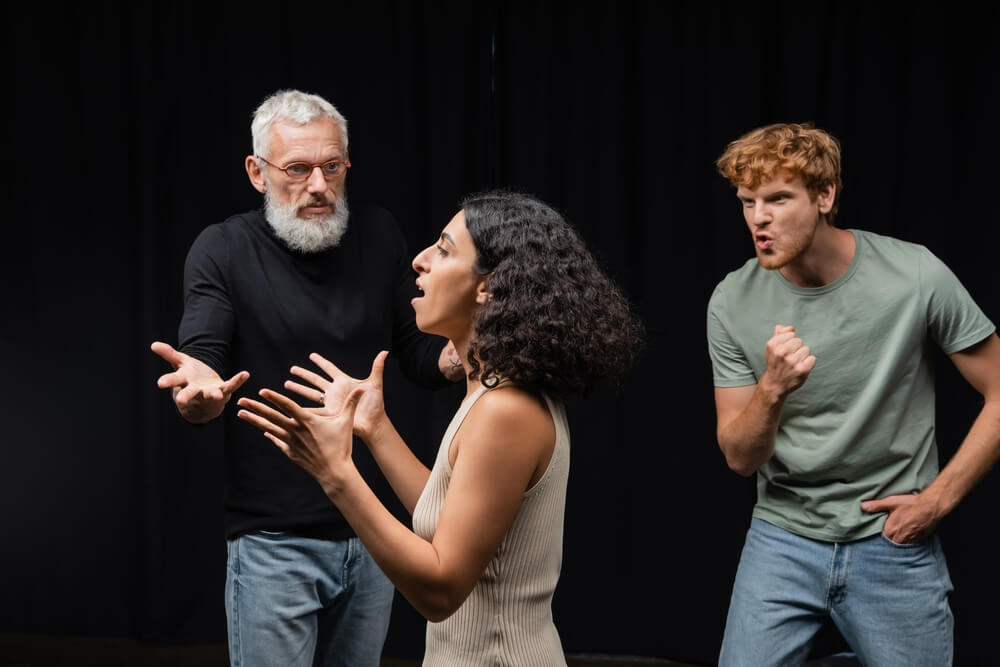Commercial Casting Director Advice for These Strike Times
If you’re a SAG-AFTRA actor riding out the storm right now, there is one outlet that may just be keeping your audition skills sharp. We’re talking about commercials, non-struck work that’s free and clear for union actors to participate in during our strike times.
But, perhaps it’s been a minute since your last commercial audition. Perhaps your rep submits you across the board, but now their undivided attention is fixed on this non-struck area of work, and you’re receiving more commercial auditions than you ever have before. Perhaps you could use some guidance.
We’ve got you covered. Pulling from our Commercial Audition Class series — in which we shared related takeaways from top casting directors — we’ve aggregated some of their key advice for commercial auditioning. Keep reading for their professional guidance on what to keep in mind before you show up to that next live appointment, whether remote or in-person, or that next self tape request comes your way.
Preparation was a common throughline of the advice casting directors shared about commercial auditioning. Let’s start with the technical logistics of remote auditions — asg casting founder Arlene Schuster recommends that actors remove any preventable audition issues ahead of time. That means eliminating potential hiccups with popular video call platforms used for remote, live auditions.
We’ve all had a mandatory Zoom update go into effect at an inopportune moment — don’t let it happen seconds before your audition starts, making you late for your appointment. “Get all the logistics figured out in order to focus on your main job: continuing to further your abilities so you can be the best actor possible,” Schuster advised.
Danielle Eskinazi — of Danielle Eskinazi Casting — reinforced the idea that preventable tech issues can distract from a performance, and actors would be wise to proactively address them. She shared guidance, as well, on how to prepare for your audition when it comes to wardrobe.
Eskinazi suggests dressing to the essence of the character, rather than going with a full costume. “For example, if your character is a person who rides horses, you don’t have to wear a cowboy hat and full get-up,” she explained. “But you can put on a plaid shirt to suggest the character, which will help the client visualize you in the role.”
Then there’s the matter of preparing the material. Think about the time you take to break down the sides for a theatrical audition. That could include coming up with your character’s back story, figuring out the subtext of your lines, and finding the beats.
Regardless of which technique you subscribe to as an actor, chances are, you set aside a sizable chunk of time to analyze the sides before even thinking about getting camera-ready for the audition. Why would you not also allocate time and thought to breaking down commercial copy?
During our interview with Megan Foley Marra — of Foley-Marra Casting — she emphasized that actors need to understand why the words chosen for commercial audition sides are important.
The casting director gave the example of auditioning to play a grandma in an allergy medicine commercial for which the copy reads, “Now I can breathe easy.” What does that actually mean to the character, though? Foley Marra posed the question, as well as provided possible answers. A newfound ease of respiration might grant her the ability to do things she previously couldn’t, for example, or make time spent with her grandchildren even more enjoyable.
Whatever choice you make, make sure it fits within the context of the commercial. “Keep in mind that your take on the copy needs to align with what the client wants to say about their product,” Foley Marra advised.
Lisa Roth — of HMH Casting — shared guidance about a related matter during our interview. She warned against making choices that add to the material in a way that’s too big of a departure from the audition instructions. “For example, let’s say that you’re auditioning to play a firefighter in a commercial, and the action of the scene is just you putting on a fire suit,” Roth noted. “If you have your self tape reader yell ‘fire’ from off camera even though it’s not in the sides, it will distract us from the actual performance.”
The casting director cautioned that creating a significant addition to the audition scenario — far outside what’s provided — may also pull the actor out of their performance and keep them from being present in the scene.
Thanks to the wisdom gleaned from these casting directors’ takeaways, you can go into your next commercial audition feeling prepared. Their interviews took place during another interesting time in our industry — when the pandemic’s effects on it were still fresh — which brings to mind the old adage that this, too, shall pass.
But who knows? You may just land a major commercial role during our current strike times. For more advice to help you get there, you can find the full interviews with Schuster, Eskinazi, Foley Marra, and Roth on Casting Networks.
There are plenty of strike-compliant roles available on Casting Networks. Sign up or login and see what’s casting near you today!
You may also like:
- Now Casting: Nestlé, Bausch + Lomb, Bumpboxx, Top of the Rock
- Tips for Directors: How to Manage Difficult Venues
- Settle in, the Strikes Don’t Seem to Be Ending Any Time Soon




